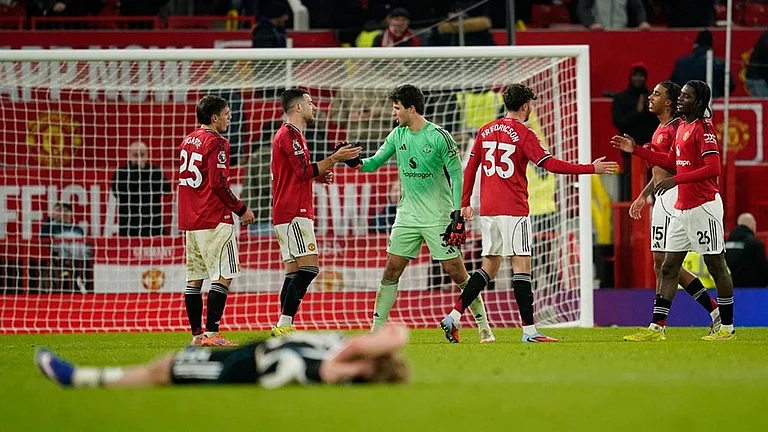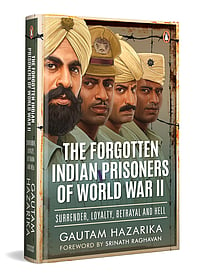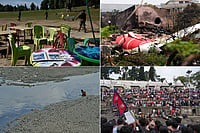This Kind of Child
K Srilata
Westland Books
Pages 311
In a world structured around the easy abilities of people, a narrow space, if at all, has been allowed to those whose abilities do not fall along expected lines. It does not matter that there wouldn’t be anyone who has not encountered some form of disability around them. When it comes to the inclusion of people whose abilities do not conform to the realm of normalcy, a tendency exists to corral them into separate spaces, forcing them into the margins.
When we talk or think about disability, we often do so without accounting for the deep and varied nuances it carries. In contrast to its antonym, the term contains layers which take on different meanings in different contexts. When we describe someone as deaf, our insensitivity comes out in the usage of the label itself and our inability to understand it as an impairment that would have enforced innumerable adjustments in a world where sounds perform an important role in navigating lives. Often, people who have different abilities are either ignored or patronised, overlooking the fact that those who have learnt to negotiate the world that thrums to able-ism do not want to engage with their specialness in all their interactions but just want to be accepted as they are without condescension.
Consider the situation of those whose inabilities are not physical or obvious, their challenges go beyond navigating their difficulties to explaining the reasons for their difficulties before they are ‘accepted’. In her book, This Kind of Child, K Srilata uses diverse forms of writing to showcase the myriad connotations of the term disability and how it cannot be pigeonholed into a rigid definition. The author brings together the lived experiences of persons with disabilities and those who care for them encouraging readers to think beyond the spectrum of normalcy while defining the living spaces we inhabit. Through essays, interviews, and short stories, the author initiates a conversation on how a varied section of people live in a universe hidden from plain sight, labouring to fit in with the perceived normalcy of the world. She argues that disability is not something that we can brush aside and ignore: Age or accidents could disable us in some way. We are unlikely to inhabit able bodies throughout life.
The book has been structured around broad perspectives exploring a particular facet or theme related to issues that challenge the lives of people with divergent abilities. Through the voices of people whose abilities do not fit in with the model of normalcy, their caregivers, siblings, parents, and educators, the book reveals the challenges while also celebrating the innovative ways adopted to exist and thrive in a world that sings to ableism.
Each of the sections bring to light the different forms of manoeuvers and counter manoeuvers undertaken by people with different abilities to actively participate in society on an equal basis with others. More often than not, we see how the external barriers create more problems, physically and psychologically, adding to the weight of the difficulties already present.

In the chapter titled, A Question of Human Rights, Rajiv Rajan, Executive Director of Ektha, an organisation that advocates for the rights of persons with disabilities, points that the definition of disability as per the United Nations Convention on the Rights of Persons with disabilities takes into account three factors: persons with impairments, attitudinal barriers and environmental barriers. He says: It is only when an impairment comes into contact with attitudinal and environmental barriers that it becomes a disability. Dheepakh P S, Senior sub-editor of the Sports Desk at The Hindu adds: The way society looks at me makes it a disability. When I go to the airport, my caretaker—and not me—will be asked where I am going.
We also hear through the voices of children the lengths of exclusion they have had to encounter from educational institutions—the places where the importance of inclusion, acceptance and diversity should ideally be introduced and reinforced. In What the Children of Sankalp say, Srilata recounts snippets of conversation with a group of students in Sankalp, an open school in Chennai: In my old school, they used to ignore me… When I tell people I am dyslexic, they don’t understand. They think this is some big disability or a big problem.
Reinforcing the need to allow everyone to live their lives with dignity, the author says that charity is not the answer. Instead, institutional and systemic support is required to ensure acceptance of differential abilities to foster an inclusive society. In his essay, All I want for Christmas, V.S. Sunder, retired Professor of Mathematics at the Institute of Mathematical Sciences, Chennai, emphasises the need for planning while designing buildings and public spaces so that it is accessible to those who are mobility-challenged without trouble. He talks about split levels in rooms accessed only through steps and narrow dimensions to doors and lifts that act as barriers to those who are wheelchair-bound when simple design modifications are all that’s needed to overcome these ‘created’ barriers.
In the section devoted to sight and how the loss of sight does not mean the absence of vision, poet, art photographer and story writer, Ananya Dasgupta writes in her essay, Getting the Light Just Right, about how during a visit to blind couple’s house, who were also friends, she was the one groping in the dark after the sunset and the light faded while her friends were comfortably preparing tea and snacks for her: I sat where I was, in the dark, unable to see well enough to go and help, and too embarrassed to say out loud that I couldn’t see…(till) the lights were switched on to fix the disability of the sighted guest.
Through the conversations with parents looking after children who failed to meet their growth milestones physically or intellectually, the author highlights the many different areas that require attention when formal support is not immediately accessible or absent. When this intersects with other factors like caste, gender, race, nationality, the burden on caregivers increases manifold.
While looking at the labour of love that goes into caring for individuals with disabilities, the narrative touches upon the rollercoaster of emotions involved –the hopes and grief, the joys and anxieties, the expressions of love and loss of freedom packaged into the role of caregiving. Yet another section, looks at the impact of the parents’ focus on the child with difficulties on siblings and their reactions. While the siblings get to understand the importance of empathy and selflessness, they also get a first-hand experience of the narrow spaces available to their siblings to actively contribute to society.
Also highlighting the role of special educators, the book looks at the intensity of work, that cannot be generic but needs to be conceptualised according to the requirements of each student. Sharing special moments, the educators interviewed by the author recount beautiful instances when the children benefit from their help. Nirmala Pandit, one of the founder-members of the Madras Dyslexia Association, mentions how she once received a wedding invitation from a student who had writing difficulties. The girl had written down the address in her own hand and mentioned that it was the only address she had written because: …you were the one who taught me.
Anuradha Shyam writes about how she finally got the attention of her first student who adamantly refused to sit down for class and instead threw tantrums during the first six sessions. Determined to get her student’s attention she decided to mimic her actions. I jumped up and down, made faces that mirrored Radhika’s and rendered her version of war cry. This entire charade lasted under a minute…it was as if she was seeing me for the first time. Transfixed, she walked towards the chair and sat down, looking at me with newfound respect. Our first session had begun.
In home for lunch, Lakshmi Govindarajan, who volunteers at a centre for people with disabilities and different learning styles, writes about how she hosts the students and educators for lunch at least twice a year so that the students at the Centre could interact with families made up of neurotypical individuals.
This Kind of Child does not just look at disabilities and how it impacts people but also looks at how everyone needs to be responsible enough to accept people beyond their abilities and foster inclusiveness.






















